US History Finals Practice Questions
0.0(0)
Card Sorting
1/54
Earn XP
Description and Tags
Study Analytics
Name | Mastery | Learn | Test | Matching | Spaced |
|---|
No study sessions yet.
55 Terms
1
New cards
The image best serves as evidence that many Native American groups had developed farming techniques that
(A) spread tobacco cultivation throughout the continent
(B) supported permanent villages
(C) allowed for continuous warfare
(D) differed dramatically from English agricultural practices
(A) spread tobacco cultivation throughout the continent
(B) supported permanent villages
(C) allowed for continuous warfare
(D) differed dramatically from English agricultural practices
(B) supported permanent villages

2
New cards
By the early 1600s, which of the following had most changed the circumstances of villages such as Secotan in eastern North America?
(A) The establishment of permanent settlements by English colonists
(B) The impact of epidemic diseases introduced by Europeans
(C) The decline of the fur and beaver trades
(D) The introduction of new foods into the Native American diet
(A) The establishment of permanent settlements by English colonists
(B) The impact of epidemic diseases introduced by Europeans
(C) The decline of the fur and beaver trades
(D) The introduction of new foods into the Native American diet
(B) The impact of epidemic diseases introduced by Europeans
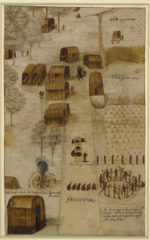
3
New cards
Which of the following best explains the presence of the Spanish in the areas depicted on the map?
(A) The emergence of competition between European powers in the Americas
(B) The outbreak of rebellion by the Pueblo Indians
(C) The spread of maize culture from American Indians to the Spanish colonists
(D) The introduction of African slavery to Spanish Florida
(A) The emergence of competition between European powers in the Americas
(B) The outbreak of rebellion by the Pueblo Indians
(C) The spread of maize culture from American Indians to the Spanish colonists
(D) The introduction of African slavery to Spanish Florida
(A) The emergence of competition between European powers in the Americas
4
New cards
Which of the following was a major difference between the Spanish colonies in the Americas in the 1500s and the English colonies in the Americas in the early 1600s?
(A) The Spanish adopted African slavery in their colonies, while the English relied more on American Indian labor.
(B) The Spanish more actively sought to convert American Indians to Christianity than did the English.
(C) The Spanish tried to change American Indian worldviews, while the English generally accommodated them.
(D) The Spanish rejected assimilating American Indians into their culture, while the English favored assimilation.
(A) The Spanish adopted African slavery in their colonies, while the English relied more on American Indian labor.
(B) The Spanish more actively sought to convert American Indians to Christianity than did the English.
(C) The Spanish tried to change American Indian worldviews, while the English generally accommodated them.
(D) The Spanish rejected assimilating American Indians into their culture, while the English favored assimilation.
(B) The Spanish more actively sought to convert American Indians to Christianity than did the English.
5
New cards
Which of the following best describes the primary purpose of the document from which the excerpt was taken?
(A) Organizing a system of rules and order in the colony
(B) Promoting a Protestant denomination
(C) Advocating for intercolonial cooperation
(D) Encouraging further English investment in the colony
(A) Organizing a system of rules and order in the colony
(B) Promoting a Protestant denomination
(C) Advocating for intercolonial cooperation
(D) Encouraging further English investment in the colony
(A) Organizing a system of rules and order in the colony
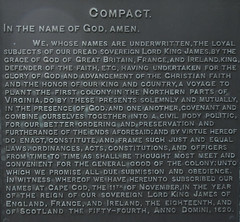
6
New cards
The ideas introduced in the excerpt most directly contributed to which of the following patterns among the British North American colonies?
(A) The imposition of strict regulation by the Crown and Parliament
(B) The establishment of local representative assemblies
(C) The pursuit of trade with England and the West Indies
(D) The development of agricultural economies
(A) The imposition of strict regulation by the Crown and Parliament
(B) The establishment of local representative assemblies
(C) The pursuit of trade with England and the West Indies
(D) The development of agricultural economies
(B) The establishment of local representative assemblies
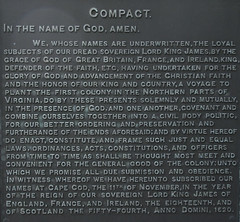
7
New cards
Participation in the "civil body politic" referenced in the excerpt would have been most available to which of the following?
(A) Members of the English nobility
(B) Sailors and soldiers
(C) Male church members
(D) Indentured servants
(A) Members of the English nobility
(B) Sailors and soldiers
(C) Male church members
(D) Indentured servants
(C) Male church members
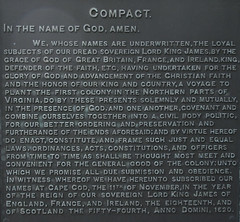
8
New cards
The issuing of the declaration in the excerpt best serves as evidence of the
(A) Patriot inclusion of abolitionism as a goal of the resistance
(B) desire of the majority of colonists to launch offensive attacks against the British
(C) efforts of colonists to protect their rights as English subjects
(D) colonial demand for complete independence from Britain
(A) Patriot inclusion of abolitionism as a goal of the resistance
(B) desire of the majority of colonists to launch offensive attacks against the British
(C) efforts of colonists to protect their rights as English subjects
(D) colonial demand for complete independence from Britain
(C) efforts of colonists to protect their rights as English subjects
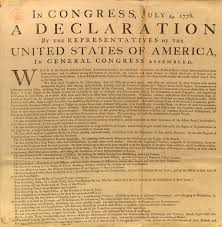
9
New cards
The British Crown's response to actions like those in the excerpt was to
(A) declare the American colonies to be in open rebellion
(B) agree to meet with colonial representatives
(C) adopt a new form of imperial government
(D) appoint a new prime minister
(A) declare the American colonies to be in open rebellion
(B) agree to meet with colonial representatives
(C) adopt a new form of imperial government
(D) appoint a new prime minister
(A) declare the American colonies to be in open rebellion
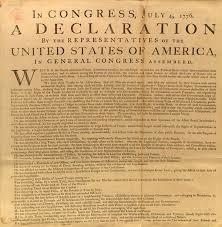
10
New cards
Which of the following pieces of evidence could best be used to challenge the assertion in the excerpt that British attacks on the colonists had been "unprovoked"?
(A) The extension of a petition of reconciliation by members of the Second Continental Congress
(B) A series of popular boycotts, mob protests, and violence against royal officials
(C) Efforts by Quakers and Germans in the mid-Atlantic colonies to promote pacifism and remain neutral
(D) The outbreak of skirmishes between Patriot and Loyalist forces throughout the southern colonies
(A) The extension of a petition of reconciliation by members of the Second Continental Congress
(B) A series of popular boycotts, mob protests, and violence against royal officials
(C) Efforts by Quakers and Germans in the mid-Atlantic colonies to promote pacifism and remain neutral
(D) The outbreak of skirmishes between Patriot and Loyalist forces throughout the southern colonies
(B) A series of popular boycotts, mob protests, and violence against royal officials
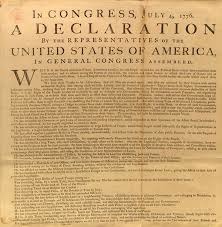
11
New cards
Which of the following most immediately built on the ideas expressed in the excerpt?
(A) The publication of the pamphlet Common Sense
(B) The drafting of the United States Constitution
(C) The issuing of George Washington's Farewell Address
(D) The writing of The Federalist papers
(A) The publication of the pamphlet Common Sense
(B) The drafting of the United States Constitution
(C) The issuing of George Washington's Farewell Address
(D) The writing of The Federalist papers
(A) The publication of the pamphlet Common Sense

12
New cards
Which of the following historical events in the 1790s most directly followed from the developments described in the excerpt?
(A) Trade and manufacturing increased United States productivity and helped the federal government pay off its bonds more quickly.
(B) George Washington's neutrality allowed the United States to trade with France, Britain, and Spain simultaneously and pay down the debt.
(C) The federal government granted French merchants a monopoly on the sale of American tobacco to pay debts from the American Revolution.
(D) The federal government established a new economic policy in part by assuming states' debts from the American Revolution.
(A) Trade and manufacturing increased United States productivity and helped the federal government pay off its bonds more quickly.
(B) George Washington's neutrality allowed the United States to trade with France, Britain, and Spain simultaneously and pay down the debt.
(C) The federal government granted French merchants a monopoly on the sale of American tobacco to pay debts from the American Revolution.
(D) The federal government established a new economic policy in part by assuming states' debts from the American Revolution.
(D) The federal government established a new economic policy in part by assuming states' debts from the American Revolution.
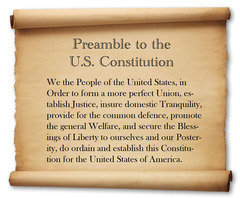
13
New cards
Which of the following most directly resulted from concerns over the increased power of the federal government in the late 1700s?
(A) Rebellions over the right to tax goods, such as the Whiskey Rebellion
(B) Slave uprisings, such as Nat Turner's Rebellion
(C) Revolts over requirements to pay taxes in hard currency, such as Shays' Rebellion
(D) Conflicts over access to land, such as Bacon's Rebellion
(A) Rebellions over the right to tax goods, such as the Whiskey Rebellion
(B) Slave uprisings, such as Nat Turner's Rebellion
(C) Revolts over requirements to pay taxes in hard currency, such as Shays' Rebellion
(D) Conflicts over access to land, such as Bacon's Rebellion
(A) Rebellions over the right to tax goods, such as the Whiskey Rebellion
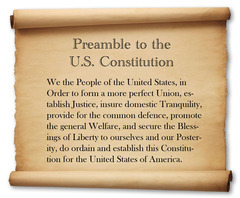
14
New cards
Which of the following issues did the framers of the United States Constitution most directly address?
(A) The domestic slave trade
(B) The establishment of a national bank
(C) The strengthening of central government powers
(D) Property qualifications required for voting
(A) The domestic slave trade
(B) The establishment of a national bank
(C) The strengthening of central government powers
(D) Property qualifications required for voting
(C) The strengthening of central government powers
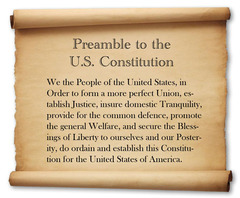
15
New cards
Which of the following most directly contributed to the situation described in the excerpt?
(A) The abolitionist movement
(B) Increased immigration
(C) The market revolution
(D) The emergence of mass political parties
(A) The abolitionist movement
(B) Increased immigration
(C) The market revolution
(D) The emergence of mass political parties
(C) The market revolution
16
New cards
During the first half of the nineteenth century, some women increasingly "bolster[ed] the household income," as described in the excerpt, by
(A) obtaining positions in textile mills
(B) signing contracts for indentured servitude
(C) performing clerical and secretarial labor for large corporations
(D) participating in secular and religious reform association
(A) obtaining positions in textile mills
(B) signing contracts for indentured servitude
(C) performing clerical and secretarial labor for large corporations
(D) participating in secular and religious reform association
(A) obtaining positions in textile mills
17
New cards
The growing number of women in the workforce in the second half of the twentieth century most directly contributed to
(A) the widespread belief that women's roles in the home should be abandoned entirely
(B) the ratification of a constitutional amendment guaranteeing women's equality
(C) legislation that restricted women's paid work to certain occupations
(D) increased social anxieties about the decline of the traditional nuclear family
(A) the widespread belief that women's roles in the home should be abandoned entirely
(B) the ratification of a constitutional amendment guaranteeing women's equality
(C) legislation that restricted women's paid work to certain occupations
(D) increased social anxieties about the decline of the traditional nuclear family
(D) increased social anxieties about the decline of the traditional nuclear family
18
New cards
Which of the following most directly contributed to the spread of settlement depicted on the map?
(A) The development of transcontinental railroads
(B) Efforts to secure boundaries with Great Britain
(C) Federal grants for purchases of western land
(D) Sustained population growth after the American Revolution
(A) The development of transcontinental railroads
(B) Efforts to secure boundaries with Great Britain
(C) Federal grants for purchases of western land
(D) Sustained population growth after the American Revolution
(D) Sustained population growth after the American Revolution
19
New cards
Which of the following most likely accounts for the limits of United States settlement in portions of North Carolina and Georgia depicted on the map?
(A) Tobacco and sugarcane crops failed to thrive in those areas.
(B) American Indians maintained sovereign control over those regions.
(C) The Northwest Ordinance prohibited slavery in those regions.
(D) The lands were set aside for American Indian reservations.
(A) Tobacco and sugarcane crops failed to thrive in those areas.
(B) American Indians maintained sovereign control over those regions.
(C) The Northwest Ordinance prohibited slavery in those regions.
(D) The lands were set aside for American Indian reservations.
(B) American Indians maintained sovereign control over those regions.
20
New cards
The patterns of settlement shown in the map culminated in which of the following national crises by 1820 ?
(A) Outrage over the Federalist Party's disloyalty in proposing New England's secession
(B) Widespread opposition to the demands of the women's rights advocates at Seneca Falls
(C) The emergence of sectional tensions over the admission of the state of Missouri
(D) Disbelief at the violence resulting from popular sovereignty in Kansas
(A) Outrage over the Federalist Party's disloyalty in proposing New England's secession
(B) Widespread opposition to the demands of the women's rights advocates at Seneca Falls
(C) The emergence of sectional tensions over the admission of the state of Missouri
(D) Disbelief at the violence resulting from popular sovereignty in Kansas
(C) The emergence of sectional tensions over the admission of the state of Missouri
21
New cards
The excerpt best supports the conclusion that in the 1850s, the United States government
(A) sought to prevent Japan from forming a naval alliance with the British empire
(B) was willing to intimidate Asian countries like Japan to secure economic opportunities
(C) attempted to monopolize Japanese commerce and to exclude the participation of Europeans in trade
(D) was interested in making the government of Japan more democratic
(A) sought to prevent Japan from forming a naval alliance with the British empire
(B) was willing to intimidate Asian countries like Japan to secure economic opportunities
(C) attempted to monopolize Japanese commerce and to exclude the participation of Europeans in trade
(D) was interested in making the government of Japan more democratic
(B) was willing to intimidate Asian countries like Japan to secure economic opportunities
22
New cards
The population trend described in the excerpt most directly reflected which of the following domestic developments in the nineteenth century?
(A) The belief that it was the Manifest Destiny of the United States to control territory across the continent
(B) The question of the role of government in funding internal improvements
(C) The claim that the United States should limit European colonialism in the Western Hemisphere
(D) The dispute over whether Congress should reestablish a national bank
(A) The belief that it was the Manifest Destiny of the United States to control territory across the continent
(B) The question of the role of government in funding internal improvements
(C) The claim that the United States should limit European colonialism in the Western Hemisphere
(D) The dispute over whether Congress should reestablish a national bank
(A) The belief that it was the Manifest Destiny of the United States to control territory across the continent
23
New cards
Which of the following was a major United States foreign policy change in the Pacific region at the end of the nineteenth century?
(A) The United States began to accept unrestricted immigration from East Asia.
(B) The United States supported the formation of the Kingdom of Hawaii.
(C) The United States reduced the size of its navy through international agreements.
(D) The United States acquired new colonial possessions such as the Philippines.
(A) The United States began to accept unrestricted immigration from East Asia.
(B) The United States supported the formation of the Kingdom of Hawaii.
(C) The United States reduced the size of its navy through international agreements.
(D) The United States acquired new colonial possessions such as the Philippines.
(D) The United States acquired new colonial possessions such as the Philippines.
24
New cards
The decision in the excerpt held which of the following to be unconstitutional?
(A) The Northwest Ordinance
(B) The Louisiana Purchase
(C) The Missouri Compromise
(D) The Wilmot Proviso
(A) The Northwest Ordinance
(B) The Louisiana Purchase
(C) The Missouri Compromise
(D) The Wilmot Proviso
(C) The Missouri Compromise
25
New cards
Which of the following most likely supported the ideas expressed in the excerpt?
(A) Abolitionists
(B) Southern Democrats
(C) Free soil advocates
(D) Northern Republicans
(A) Abolitionists
(B) Southern Democrats
(C) Free soil advocates
(D) Northern Republicans
(B) Southern Democrats
26
New cards
Which of the following was the most immediate result of the decision in the excerpt?
(A) Tensions over slavery diminished.
(B) Support grew for the Republican Party.
(C) The United States fought a war with Mexico.
(D) Most slave states voted to secede from the Union.
(A) Tensions over slavery diminished.
(B) Support grew for the Republican Party.
(C) The United States fought a war with Mexico.
(D) Most slave states voted to secede from the Union.
(B) Support grew for the Republican Party.
27
New cards
Which of the following invalidated the decision in the excerpt?
(A) The Fourteenth Amendment
(B) Plessy v. Ferguson
(C) Brown v. Board of Education of Topeka
(D) The Civil Rights Act of 1964
(A) The Fourteenth Amendment
(B) Plessy v. Ferguson
(C) Brown v. Board of Education of Topeka
(D) The Civil Rights Act of 1964
(A) The Fourteenth Amendment
28
New cards
Which of the following contributed most to the process described in the excerpt?
(A) The industrialization of urban areas in the Northeast
(B) The building of new roads and canals
(C) Increased immigration from eastern Europe
(D) Legislation that facilitated the distribution of western land
(A) The industrialization of urban areas in the Northeast
(B) The building of new roads and canals
(C) Increased immigration from eastern Europe
(D) Legislation that facilitated the distribution of western land
(D) Legislation that facilitated the distribution of western land
29
New cards
Which of the following was a long-term result of the developments described in the excerpt?
(A) The growth of political tensions between the United States and Mexico
(B) A conflict with Great Britain over the northern border of the United States
(C) A large-scale African American migration to the region
(D) The creation of farmers' groups to resist corporate control of agricultural markets
(A) The growth of political tensions between the United States and Mexico
(B) A conflict with Great Britain over the northern border of the United States
(C) A large-scale African American migration to the region
(D) The creation of farmers' groups to resist corporate control of agricultural markets
(D) The creation of farmers' groups to resist corporate control of agricultural markets
30
New cards
The settlement pattern described in the excerpt was most similar to earlier settlement patterns in that it was
(A) discouraged by the federal government through legislation
(B) motivated largely by the desire to expand Protestant Christianity
(C) accompanied by conflict with American Indians over landownership
(D) the source of political divisions over the expansion of slavery
(A) discouraged by the federal government through legislation
(B) motivated largely by the desire to expand Protestant Christianity
(C) accompanied by conflict with American Indians over landownership
(D) the source of political divisions over the expansion of slavery
(C) accompanied by conflict with American Indians over landownership
31
New cards
Based on the excerpt, Beveridge would have most likely opposed which of the following?
(A) Senator Henry Dawes's program to reform American Indian policy through forced assimilation
(B) Antiexpansionist groups that advocated Filipino independence
(C) The Chinese Exclusion Act and limits on immigration
(D) The doctrine of survival of the fittest as applied to society
(A) Senator Henry Dawes's program to reform American Indian policy through forced assimilation
(B) Antiexpansionist groups that advocated Filipino independence
(C) The Chinese Exclusion Act and limits on immigration
(D) The doctrine of survival of the fittest as applied to society
(B) Antiexpansionist groups that advocated Filipino independence
32
New cards
Beveridge's ideas in the excerpt best support which of the following positions commonly expressed at the time?
(A) Mexico and Canada have no right to question or check United States expansion.
(B) The right of the United States to assert power over foreign lands is God given.
(C) The United States foreign policy has always been isolationist and reluctant to intervene abroad.
(D) A smaller federal government was necessary to face the foreign policy
(A) Mexico and Canada have no right to question or check United States expansion.
(B) The right of the United States to assert power over foreign lands is God given.
(C) The United States foreign policy has always been isolationist and reluctant to intervene abroad.
(D) A smaller federal government was necessary to face the foreign policy
(B) The right of the United States to assert power over foreign lands is God given.
33
New cards
Beveridge's speech was written in the context of
(A) war with Great Britain during the James Madison administration
(B) efforts to gain concessions from Mexico through conflict
(C) debates in the aftermath of war with Spain
(D) the decision to avoid war with France during the John Adams administration
(A) war with Great Britain during the James Madison administration
(B) efforts to gain concessions from Mexico through conflict
(C) debates in the aftermath of war with Spain
(D) the decision to avoid war with France during the John Adams administration
(C) debates in the aftermath of war with Spain
34
New cards
The ideas expressed in the excerpt most clearly reflect the ideals of which of the following?
(A) Progressivism
(B) Conservatism
(C) Expansionism
(D) States' rights
(A) Progressivism
(B) Conservatism
(C) Expansionism
(D) States' rights
(A) Progressivism
35
New cards
Addams' ideas expressed in the excerpt have most in common with which of the following historical views about women?
(A) The seventeenth-century Puritan belief that women must be governed by their husbands and fathers
(B) The belief of some mid-nineteenth-century reformers that women could act as the moral voice in society
(C) The argument of some nineteenth-century advice books that women's sphere was restricted to the home and family
(D) The rejection of traditional gender roles by feminists in the mid-twentieth century
(A) The seventeenth-century Puritan belief that women must be governed by their husbands and fathers
(B) The belief of some mid-nineteenth-century reformers that women could act as the moral voice in society
(C) The argument of some nineteenth-century advice books that women's sphere was restricted to the home and family
(D) The rejection of traditional gender roles by feminists in the mid-twentieth century
(B) The belief of some mid-nineteenth-century reformers that women could act as the moral voice in society
36
New cards
Which of the following would have been most likely to support the sentiments expressed by Addams in the excerpt?
(A) Know-Nothings
(B) Machine politicians
(C) Southern Democrats
(D) Settlement house workers 37.
(A) Know-Nothings
(B) Machine politicians
(C) Southern Democrats
(D) Settlement house workers 37.
(D) Settlement house workers 37.
37
New cards
The concerns Addams raises in the excerpt were most directly a reaction to which of the following?
(A) Social injustice and rising economic inequality
(B) The expansion of government regulation of corporations
(C) The transformation of rural society by mechanized agriculture
(D) Fears about the growing number of immigrants in the United States
(A) Social injustice and rising economic inequality
(B) The expansion of government regulation of corporations
(C) The transformation of rural society by mechanized agriculture
(D) Fears about the growing number of immigrants in the United States
(A) Social injustice and rising economic inequality
38
New cards
In the excerpt, Coolidge was reacting most directly against
(A) Progressive efforts to regulate the economy
(B) the consolidation of corporations into trusts and holding companies
(C) conspicuous consumption by some segments of society
(D) the promotion of laissez-faire economic policies
(A) Progressive efforts to regulate the economy
(B) the consolidation of corporations into trusts and holding companies
(C) conspicuous consumption by some segments of society
(D) the promotion of laissez-faire economic policies
(A) Progressive efforts to regulate the economy
39
New cards
Members of which of the following groups would have been most likely to agree with the perspective expressed by Coolidge in the excerpt?
(A) Business executives
(B) Farm laborers
(C) Industrial workers
(D) Recent immigrants
(A) Business executives
(B) Farm laborers
(C) Industrial workers
(D) Recent immigrants
(A) Business executives
40
New cards
The ideas expressed in the excerpt by Coolidge were most similar to the ideas of which of the following?
(A) Anti-imperialists in the 1890s
(B) New Dealers in the 1930s
(C) Great Society supporters in the 1960s
(D) New conservatives in the 1980s
(A) Anti-imperialists in the 1890s
(B) New Dealers in the 1930s
(C) Great Society supporters in the 1960s
(D) New conservatives in the 1980s
(D) New conservatives in the 1980s
41
New cards
Which of the following factors most likely contributed to the trend in Chicago's population from 1890 to 1940 ?
(A) Increasing birth rates
(B) Job opportunities in industry
(C) The promise of religious freedom
(D) Growing employment in agriculture
(A) Increasing birth rates
(B) Job opportunities in industry
(C) The promise of religious freedom
(D) Growing employment in agriculture
(B) Job opportunities in industry
42
New cards
Which of the following groups was LEAST likely to have contributed to the trend in Chicago's population from 1890 to 1940 ?
(A) African American migrants from the southern United States
(B) Immigrants from eastern and southern Europe
(C) Immigrants from northern and western Europe
(D) Immigrants from eastern and southern Asia
(A) African American migrants from the southern United States
(B) Immigrants from eastern and southern Europe
(C) Immigrants from northern and western Europe
(D) Immigrants from eastern and southern Asia
(D) Immigrants from eastern and southern Asia
43
New cards
Which of the following factors was most likely responsible for the change in Chicago's population from 1950 to 1990 ?
(A) Migration to the suburbs and surrounding regions
(B) Federal policies discouraging immigration
(C) Decreasing birth rates among city dwellers
(D) Continued racial discrimination in urban public housing
(A) Migration to the suburbs and surrounding regions
(B) Federal policies discouraging immigration
(C) Decreasing birth rates among city dwellers
(D) Continued racial discrimination in urban public housing
(A) Migration to the suburbs and surrounding regions
44
New cards
One effect of the population changes that occurred nationwide from 1950 to 1990 was the
(A) decreased economic influence of immigrants on United States society
(B) decreased economic importance of the Pacific Northwest
(C) increased economic importance of the Northeast
(D) increased economic influence of the South and West
(A) decreased economic influence of immigrants on United States society
(B) decreased economic importance of the Pacific Northwest
(C) increased economic importance of the Northeast
(D) increased economic influence of the South and West
(D) increased economic influence of the South and West
45
New cards
Eisenhower's concerns expressed in the excerpt emerged most directly from the context of the
(A) First World War
(B) Second World War
(C) Cold War
(D) Vietnam War
(A) First World War
(B) Second World War
(C) Cold War
(D) Vietnam War
(C) Cold War
46
New cards
Which of the following most directly contributed to the developments Eisenhower warned "we must guard against"?
(A) The internment of Japanese Americans
(B) The increased employment of women in defense manufacturing
(C) The growth of the nuclear arsenal
(D) The desire to protect oil supplies in the Middle East
(A) The internment of Japanese Americans
(B) The increased employment of women in defense manufacturing
(C) The growth of the nuclear arsenal
(D) The desire to protect oil supplies in the Middle East
(C) The growth of the nuclear arsenal
47
New cards
Which of the following best characterizes the military-industrial complex in the decade following Eisenhower's speech?
(A) Popular protest forced greater separation between the military and industry.
(B) Private industry lost significant influence with the federal government.
(C) The military lost significant influence in the federal government.
(D) The concerns about the military and industry largely persisted
(A) Popular protest forced greater separation between the military and industry.
(B) Private industry lost significant influence with the federal government.
(C) The military lost significant influence in the federal government.
(D) The concerns about the military and industry largely persisted
(D) The concerns about the military and industry largely persisted
48
New cards
The ideas expressed in the excerpt arose most directly in reaction to which of the following?
(A) A Supreme Court decision that ordered the desegregation of public schools
(B) Persecution of African American labor union organizers during the Red Scare
(C) Discrimination and disenfranchisement that continued despite legislative gains
(D) An increase in conservative political activism by Black evangelical churches
(A) A Supreme Court decision that ordered the desegregation of public schools
(B) Persecution of African American labor union organizers during the Red Scare
(C) Discrimination and disenfranchisement that continued despite legislative gains
(D) An increase in conservative political activism by Black evangelical churches
(C) Discrimination and disenfranchisement that continued despite legislative gains
49
New cards
The ideas expressed in the excerpt could best be used to support which of the following perspectives at the time?
(A) Violence is the best means for African Americans to change their status.
(B) Integration should be rejected as the primary goal of the African American rights movement.
(C) Separatism would not help African Americans achieve a more powerful political voice.
(D) Economic inequality accounts for the persistence of racial discrimination.
(A) Violence is the best means for African Americans to change their status.
(B) Integration should be rejected as the primary goal of the African American rights movement.
(C) Separatism would not help African Americans achieve a more powerful political voice.
(D) Economic inequality accounts for the persistence of racial discrimination.
(D) Economic inequality accounts for the persistence of racial discrimination.
50
New cards
Which of the following resulted most directly from the ideas expressed in the excerpt?
(A) The redirection of federal funding from urban social programs to the Vietnam War
(B) Building sentiment among Civil Rights activists for the use of passive resistance and peaceful protest
(C) Intensification of political and cultural debates over changes in African American family structures
(D) Growing opposition among Civil Rights activists to Democratic political leaders who supported the status quo
(A) The redirection of federal funding from urban social programs to the Vietnam War
(B) Building sentiment among Civil Rights activists for the use of passive resistance and peaceful protest
(C) Intensification of political and cultural debates over changes in African American family structures
(D) Growing opposition among Civil Rights activists to Democratic political leaders who supported the status quo
(D) Growing opposition among Civil Rights activists to Democratic political leaders who supported the status quo
51
New cards
The ideas expressed in the memo were most consistent with which of the following foreign policy beliefs after 1945 ?
(A) A global capitalist economy led by the United States would help stabilize the international system.
(B) A nonaligned movement would help balance out the communist nations in the global order.
(C) Collective security alliances provided the best means to protect United States commercial interests.
(D) The United States should unilaterally support postwar decolonization movement
(A) A global capitalist economy led by the United States would help stabilize the international system.
(B) A nonaligned movement would help balance out the communist nations in the global order.
(C) Collective security alliances provided the best means to protect United States commercial interests.
(D) The United States should unilaterally support postwar decolonization movement
(A) A global capitalist economy led by the United States would help stabilize the international system.
52
New cards
Those who shared Powell's perspective most likely opposed which of the following developments in the United States?
(A) The rise of the military-industrial complex during the 1950s and the 1960s
(B) An increase in the standard of living in the decades following the Second World War
(C) Laws limiting the power of labor unions in the 1920s
(D) The creation of social welfare and regulatory agencies under the New Deal and Great Society
(A) The rise of the military-industrial complex during the 1950s and the 1960s
(B) An increase in the standard of living in the decades following the Second World War
(C) Laws limiting the power of labor unions in the 1920s
(D) The creation of social welfare and regulatory agencies under the New Deal and Great Society
(D) The creation of social welfare and regulatory agencies under the New Deal and Great Society
53
New cards
Based on the excerpt, Powell would have been most likely to support which of the following during the 1980s?
(A) An increase in union membership for jobs in the service sector
(B) The curtailment of civil liberties in order to combat terrorist threats
(C) Significant tax cuts and the deregulation of many industries
(D) The relaxation of immigration policies and the granting of amnesty
(A) An increase in union membership for jobs in the service sector
(B) The curtailment of civil liberties in order to combat terrorist threats
(C) Significant tax cuts and the deregulation of many industries
(D) The relaxation of immigration policies and the granting of amnesty
(C) Significant tax cuts and the deregulation of many industries
54
New cards
The excerpt most directly reflects which change in United States society during the 1970s and 1980s?
(A) The widespread closing of public schools
(B) An increase in the number of traditional nuclear families
(C) The rise of political activism among evangelicals
(D) The emergence of a youth-based counterculture
(A) The widespread closing of public schools
(B) An increase in the number of traditional nuclear families
(C) The rise of political activism among evangelicals
(D) The emergence of a youth-based counterculture
(C) The rise of political activism among evangelicals
55
New cards
The position on defense spending advocated by the Moral Majority and similar groups during the 1980s indicates that they would have been most likely to support the
(A) significant arms reductions made by the Soviet Union and the United States
(B) Cold War rhetoric used by Republicans
(C) resurgent isolationist policies advocated by Democrats
(D) limitation of services for military veterans
(A) significant arms reductions made by the Soviet Union and the United States
(B) Cold War rhetoric used by Republicans
(C) resurgent isolationist policies advocated by Democrats
(D) limitation of services for military veterans
(B) Cold War rhetoric used by Republicans